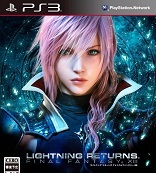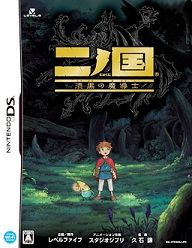Romancing SaGa: Minstrel Song
PlayStation 2
Reviewed: 10/15/2005
 |
SaGa games have usually been a blend of fantasy elements (both new and traditional) and themes from the Renaissance. Examples of ties to the Renaissance include the series’ style of artwork, the character Lute’s name and instrument in SaGa Frontier, and several others peppered through the series. During this time period, there were multiple varieties of traveling entertainers called Minstrels, from which Romancing SaGa gets its Japanese subtitle “Minstrel Song.” These folks went from city to city playing songs and telling stories. In their travels, they would hear new stories, new versions of old stories, and of course new songs. Many made a practice of learning the new tunes and retelling their stories in other cities they would later visit. Are you starting to see the comparison to the new Romancing SaGa? It is well demonstrated in the game’s opening video when the Minstrel of the game is singing the theme song and walking through various areas of the game. In that same way, Akitoshi Kawazu took a trip through the series in search of the best parts.
Romancing SaGa is, at the base, a remake of the 1992 Super Famicom game of the same name, which didn’t ship to North America. Called Romancing SaGa: Minstrel Song in Japan, this game is better looked at as a completely new title. This is because there are so many modifications and additions to the game. The most obvious of the changes are the graphics. The game has been completely overhauled into 3D and brought into PS2 standards. While it’s pretty to look at, not all is well with the technical aspects of Romancing SaGa. For one thing, the characters run just a bit too slow. At times during the game, one might feel the urge to reach out and push the on-screen character from behind, in order to speed him/her along. A second similar gripe would be with the game’s camera. Since enemies are seen on screen and battles are initiated by contact with them, it is sometimes essential to see where the enemies are. Unfortunately, this can’t always happen because the camera will be fixed in a way that players can’t quite see the enemies until they’re too close. In situations with very tough enemies, this can be particularly annoying. It doesn’t help that some dungeons are loaded with dead ends, either.
 |
| To better comprehend the graphic update, compare the above screen to this one. Yeah. |
The great part about this review is that I’m already done with the flaws. Now for what makes the game great. First, the patented SaGa play style is back; the Free Scenario system is in place and as good as ever. After the players are introduced to whichever of the 8 characters they have selected, they are treated to a lovely introduction, an opening story segment, and just a short bit of planned scenario. From that point, the player decides what turns the adventure takes. People who love exploration and open-ended adventures will adore the feeling that comes with playing this game. Knowing you’ve got a jungle behind you, unexplored ruins just across the island, and a boat that will take you to a different continent is a great feeling. Just as the game says in its slogan, players really do create their own SaGa here.
In so doing, veterans of previous games will notice something different about Romancing SaGa: it’s a heck of a lot more user-friendly than previous games in the series. The first example of this comes from the in-battle comments made by the Minstrel that narrates the game. For example, the first time someone learns a new skill in the middle of a fight, the battle will automatically pause for an explanation of how and why this is happening. Another item very useful to players is the “volunteer brigade.” In every town, there is a little know-it-all who actually…knows it all. Players can talk to him for help with any detail of the game’s play, as well as acquire a useful map of the town they’re in. Things like this were sorely needed in previous titles, especially the mind-bogglingly complex Unlimited Saga. Not knowing what to do or how to take advantage of the game’s system was a huge basis for complaint in other SaGa games, but these problems are eradicated in Romancing SaGa.
 |
| Quite the varied cast. |
Combat and character growth are as good as they’ve ever been. That is to say, they’re fantastic. Players who are familiar with SaGa Frontier will have no trouble knowing how things work immediately. LP, mid-battle skill learning, conflicting magic schools, and combination attacks are all back, used pretty much just as they were in that game. For the first 30-60 minutes of a given playthrough, the battles might seem a little bit dull, due to the fact that not many skills have been learned and there hasn’t been much time to customize the party with things like magic, proficiencies, and classes. That’s fine, because the time will fly, and the building process is fun every time. Instead of levels, a character’s individual stats might improve after any battle. For example, a character might gain some VIT after a battle, then go a few battles with no growth, then gain a point of STR after the next battle, some HP after the next, and so on. Again, this has been done in previous SaGas.
There is a lot more to the customization here, though. For one thing, jewels (obtained after battles mostly) can be used in towns to change one’s class from things like Pirate, Martial Artist, Entertainer, and so on, all with specific pros and cons. “Proficiencies” are also available to learn, which are useful in dungeons. Proficiencies include things like lock picking, the ability to find buried treasures, etc. While some will surely put down the controller and cross their arms in anger at the lack of tradition, the gameplay in Romancing SaGa is an excellent change of pace.
 |
| Myriam is a returning member of the supporting cast from the original. |
The music in Romancing SaGa is darn good, all around. A select few tracks are short and repetitive, but they’re all tolerable. Most have a very epic sound to them that is perfectly fitting for a game whose theme is creating one’s own saga. The graphics are splendid. The towns, the dungeons, and everything in between is good stuff. For important segments of storyline, Unlimited Saga‘s sketch motion is used again. These pieces are a joy to see, and Square Enix did a fantastic job putting them together. They’re not the million-dollar CG cinemas from Final Fantasy games, but in all honesty, I’d have been very pissed off if they were. That’s not how SaGa rolls.
The Minstrel and the final boss, Saruin, are glue that hold the eight stories together. All quests share these things. The Minstrel hangs out in the towns, no matter whose quest, offering his services of storytelling, song playing, and party member firing (if you’ve got someone you’d like to give the boot). Likewise, while each character takes a different road to get there, Saruin meets all of them eventually. With this, Square Enix made each distinctly different, yet players will not feel lost when making the transition to a new character. The whole thing is put together very well.
 |
| Learning a new skill in the middle of battle. |
Some have complained about a “lack of story” within the game. I fail to see where this is lacking. Every character is well established, has information about him/her readily available, and there are indeed some things the player won’t see coming. Even though each character has the same final enemy, they all have different stpries to tell, and the even though there is not constantly a princess waiting to be saved, the story pieces that are present are sufficiently entertaining. Just because there are not Squall-Rinoa kisses doesn’t mean these stories are shallow or “lacking.” Events in the game are satisfactory in number, and entertaining to boot.
Romancing SaGa: Minstrel Song has been described by its developers as a functional compilation of the SaGa series. Just as a Minstrel of old traveled the land perfecting his music and stories, Minstrel Song revisits past SaGa games and combines elements to make a true classic. Ingredients include all the best features of previous entries into the series: The story and characters of the original, with super-updated graphics and extra quests; the mid-battle skill learning of Romancing SaGa 2, now called a “glimmer;” The growth system of Romancing SaGa 3; The free scenario, Life Point, and combo systems, as used in SaGa Frontier; the Sketch Motion cinema visuals from Unlimited Saga; probably others that slipped by my SaGa radar. This game is truly a mix like you’ve never seen before. It is delightful from start to finish, with all eight characters.
-Heath Hindman
| Score Breakdown | ||
| Overall Great Out of 10 See our Review Criteria |
Gameplay | Excellent |
| Story | Very Good | |
| Graphics | Great | |
| Sound/Music | Excellent | |
| Replay Value | Very Good | |
| The Verdict: 8 | ||








